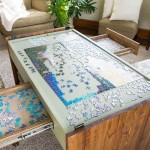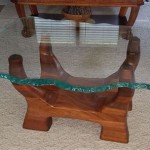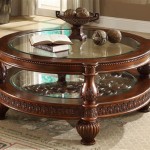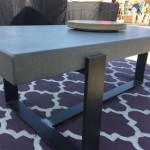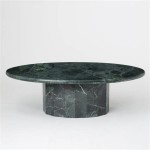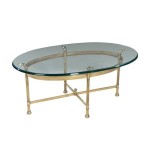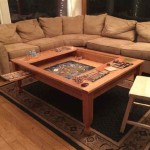How To Make A Table Out Of Wood Pallets
Creating a table from reclaimed wood pallets offers a cost-effective and environmentally friendly way to furnish a space. This process, while requiring some effort, can be accomplished with readily available tools and a moderate level of DIY experience. This guide provides a comprehensive step-by-step approach to constructing a pallet wood table.
Gathering Materials and Tools: The initial stage involves assembling the necessary components. One or more wood pallets, depending on the desired table size, are the primary requirement. Additional materials include wood screws, sandpaper (various grits), wood stain or paint (optional), a protective sealant, and safety glasses. Essential tools comprise a crowbar, hammer, saw (circular saw recommended, hand saw acceptable), measuring tape, drill with appropriate drill bits, and a level.
Disassembling the Pallets: Dismantling the pallets is often the most challenging aspect. Care must be taken to avoid splintering the wood. The most effective method involves using a crowbar and hammer to carefully pry the boards apart at the nail junctions. Avoid using excessive force, which can damage the wood. A reciprocating saw can also be used for quicker dismantling but requires careful handling to prevent damage.
Preparing the Wood: Once disassembled, the pallet boards will require cleaning and preparation. Begin by removing any remaining nails or staples. Thorough sanding is crucial for achieving a smooth and splinter-free surface. Start with a coarser grit sandpaper (e.g., 60-grit) to remove rough patches and work progressively towards finer grits (e.g., 120-grit and then 220-grit) for a polished finish. A power sander can significantly expedite this process.
Designing and Measuring: Before assembling the tabletop, determine the desired dimensions of the finished table. Consider the intended use and available space. Measure and mark the pallet boards accordingly. A consistent width for all boards creates a uniform tabletop. If necessary, use a saw to cut the boards to the required lengths.
Constructing the Tabletop: Lay the prepared boards side-by-side to form the tabletop surface. Ensure the edges are flush and the overall surface is level. Use support boards underneath, perpendicular to the tabletop boards, to provide stability and structure. Attach these support boards using wood screws, pre-drilling pilot holes to prevent wood splitting. The number and placement of support boards depend on the table's size and intended weight capacity.
Building the Table Base: The table base can be constructed in various ways. One option is to create a frame from additional pallet wood, attaching legs to the corners. Alternatively, pre-made metal legs can be purchased and attached to the underside of the tabletop. The chosen design should complement the overall aesthetic and provide adequate support. Ensure the base is level and securely attached to the tabletop using screws and appropriate brackets.
Finishing the Table: Once the table is assembled, apply a wood stain or paint to achieve the desired finish. This step is optional but can significantly enhance the table's appearance and protect the wood. Allow the stain or paint to dry completely according to the manufacturer's instructions. Apply a protective sealant to provide further protection against moisture and wear. Several coats may be necessary for optimal durability.
Optional Considerations: Consider adding additional features to personalize the table. A lower shelf can be incorporated into the design for added storage. Casters can be attached to the table legs for increased mobility. Decorative elements, such as stencils or metal accents, can further enhance the table's visual appeal.
Safety Precautions: Throughout the entire process, prioritize safety. Wear safety glasses during the dismantling and sanding stages to protect eyes from debris. Use appropriate gloves when handling rough wood. Exercise caution when operating power tools and follow the manufacturer's instructions. Work in a well-ventilated area, especially when applying stains, paints, or sealants.
Constructing a table from wood pallets can be a rewarding project, resulting in a unique and functional piece of furniture. By following these detailed steps and taking necessary precautions, individuals can transform reclaimed materials into a valuable addition to their living space.

Pallet Table Easy To Make Diy

One Of A Kind Pallet Wood Dining Table

Diy Pallet Coffee Table No Power Tools
Wood Pallet Table Diy A Beautiful Mess

Diy Pallet Wood Coffee Table

Build A Diy Pallet Table With Herringbone Design Lovely Greens
Wood Pallet Table Diy A Beautiful Mess

How To Build An Outdoor Dining Table From Pallet Wood Crafted Work

Diy Pallet Coffee Table Again
Wood Pallet Table Diy A Beautiful Mess
Related Posts


